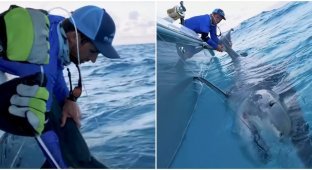Everyone's heard of the most gigantic fish on Earth, the megalodon shark. Like the Tyrannosaurus rex, this shark is breathtaking. After all, we love gigantic, aggressive predators (wouldn't it be great to glorify cows in history—both common and sea cows? But no, we're drawn to all things toothy and clawed). 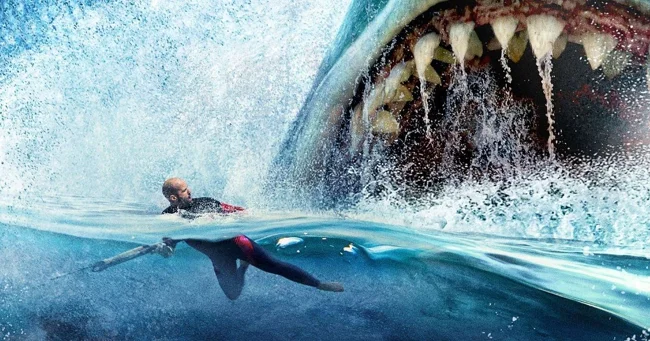
Millions of years ago, a huge fish roamed the Earth's oceans—the megalodon. This ancient shark, 15 meters long (the height of a five-story building), is the largest shark that ever lived on Earth. Archaeologists have found its teeth in various parts of the planet. This means that this shark was found everywhere, in all oceans.
In films, the megalodon is portrayed as an incredibly large monster, capable of chomping through an ocean liner. Much research has been devoted to it, and both feature films and documentaries have been made about it. 
Let's see what this monster really was. Let's dive for two minutes (no, not into the prehistoric ocean, of course!) into ancient biology.
Warm-blooded fish
Megalodon was warm-blooded, which is unusual for sharks. This allowed it to move faster and inhabit colder waters.
Megalodon was a fearsome predator. Megalodon likely knew the location of its prey's vital organs and struck accurately.
Of course, megalodon's body temperature was lower than that of mammals. But it also had an internal source of "heating," which allowed it to maintain a temperature higher than the surrounding environment. 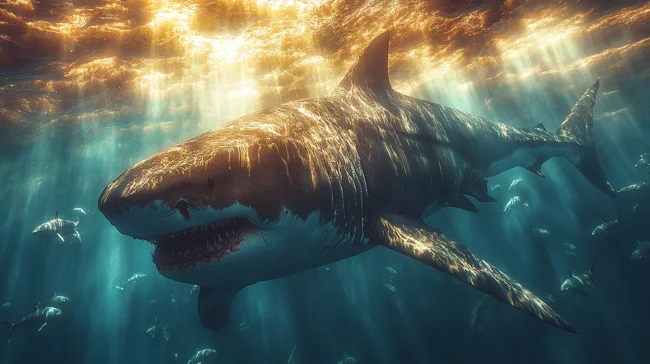
This adaptation allowed megalodon to conquer the entire ocean, including cold waters. But it also proved its downfall. Megalodon required a great deal of food. And here we smoothly move on to curious fact number two.
Megalodon remains have even been found in freshwater sediments, suggesting it could even enter rivers! Megalodons apparently migrated constantly in search of food. Indeed, feeding such a voracious creature is no easy task.
The Megalodon went extinct because whales got smarter
One of the reasons for the Megalodon's extinction was that its prey began to literally slip right out of its mouth.
It fed on whales at the peak of its "career." At that time, whales had already actively explored the seas, finally abandoning their land-based lifestyle. 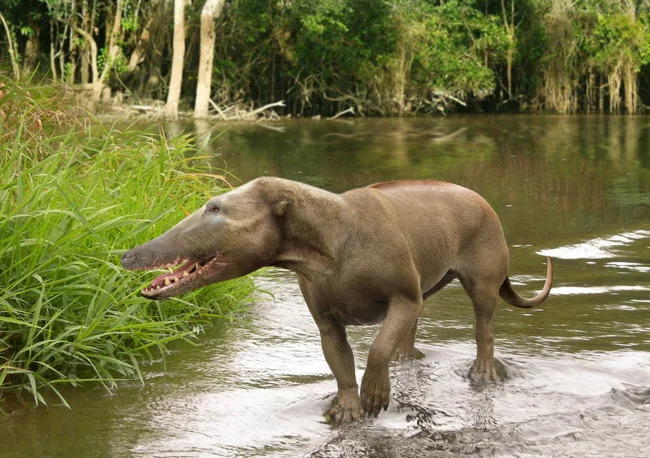
Whales were still new to the deep sea at that time and often fell prey to Megalodons. Megalodons didn't even hunt them particularly vigorously – they simply lay there and waited for the right moment for a whale to swim nearby.
Over time, whales adapted, became smarter, and began to easily outmaneuver slow predators. Megalodons, having lost their main food source, gradually began to die out. 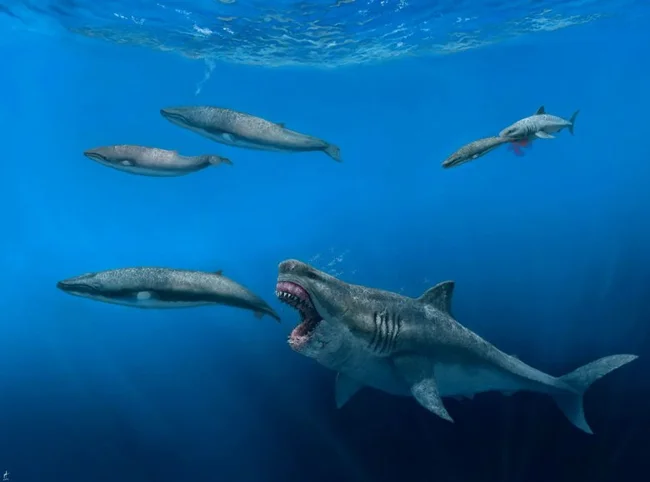
This process was exacerbated by climate change—a cooling wave that engulfed the planet. Megalodons finally became extinct 2.6 million years ago.
A megalodon could bite a ship in half
The megalodon's jaws were so powerful that it was quite capable of cutting a ship in half. Certainly not the Titanic, but a small wooden boat could have fallen victim. 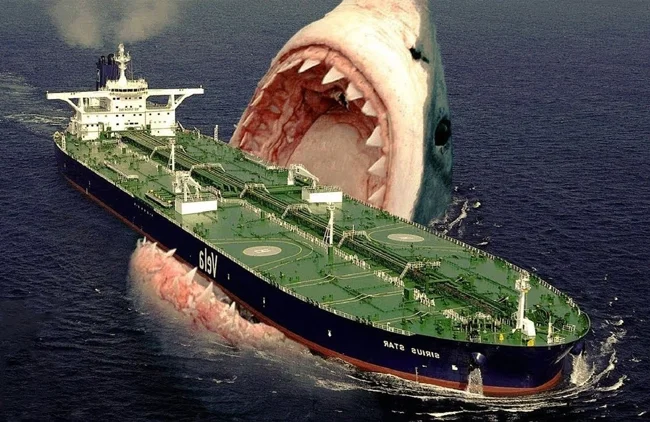
Megalodon was capable of completely destroying typical wooden ships of ancient and medieval times (such as triremes or caravels).
This was the conclusion reached by a group of scientists from the US and Australia in 2008. They used computer modeling technology to calculate the bite force of the giant shark. The result was impressive: the power of megalodon's jaws was sufficient to crush seagoing vessels, the skull of a whale, and the tough shell of a turtle.
Using biomechanical modeling, paleontologists have determined that the bite force of this extinct species was enormous – up to 18 tons. This is almost five times greater than that of a Tyrannosaurus rex. And 10 times larger than a modern great white shark. 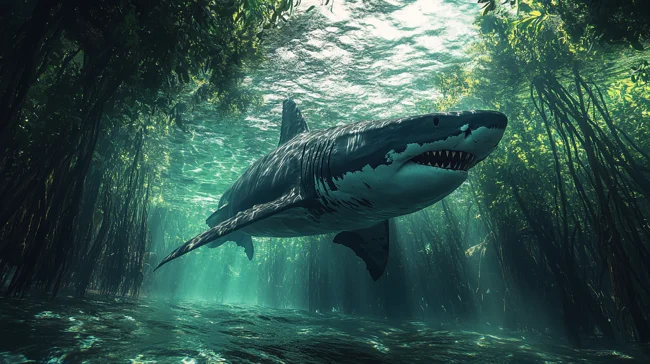
In fact, this is why it fed on whales. The size of its jaws and teeth allowed it to crush even the bones of large whales.
Its teeth were equipped with sharp serrations and arranged in five rows at different angles. In total, the animal had 276 sharp teeth. Essentially, it was a veritable saw. Prey had virtually no chance of escaping this trap.
The megalodon's mouth was enormous: two meters high and two and a half meters long. Scientists have determined that it could swallow fish or other animals up to eight meters long whole. Megalodon tore larger prey apart and swallowed it piece by piece.
Why haven't any megalodon skeletons been found? 
Interestingly, paleontologists have never found a megalodon skeleton. Scientists explain this by the fact that its body frame was composed of cartilage, not bone. This structure is typical of all sharks. Cartilage tissue is similar in structure to cork. Under the influence of bacteria and other factors, it decomposes fairly quickly, leaving no traces. This means it cannot fossilize like bone. 
Therefore, scientists have to use shark teeth, several discovered vertebrae, and the remains of other marine creatures bearing megalodon tooth marks for their research. 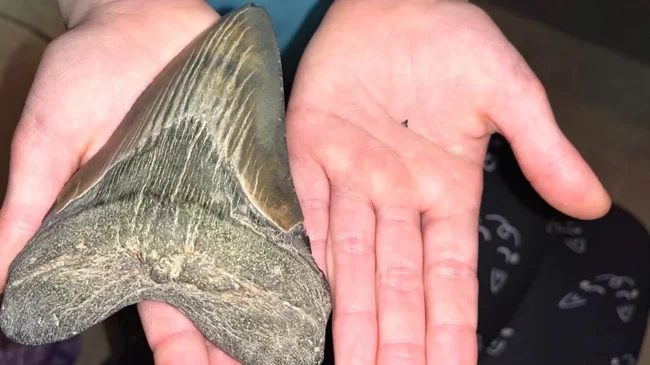
Quite a few of these recent artifacts have been discovered. They show how this predator preferred to kill its victims. It would bite them in half. Sometimes, the shark did something different. Megalodon would first bite off the fins and then devour the victim, which had lost the ability to move.
How Long Did Megalodons Live?
These prehistoric fish can be considered long-lived. Using CT scans, researchers examined megalodon vertebrae to determine how many so-called growth bands they had. 
The vertebrae, 15 centimeters in diameter, were examined. Scientists believe they once belonged to a megalodon 9 meters long. The researchers counted nine growth bands, which indicates an age of 46 years.
Since megalodons could grow to 15-20 meters in length, their lifespan was likely significantly longer than 46 years.
Are megalodons still alive? 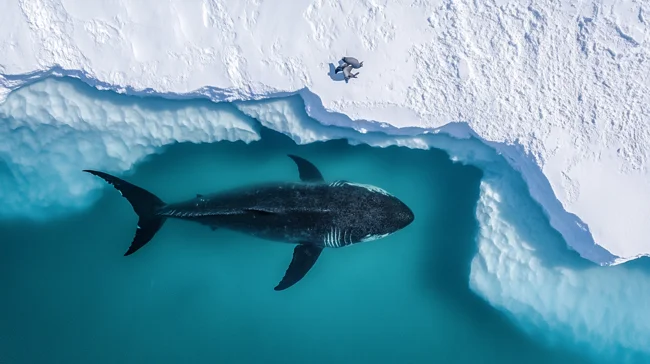
There is no evidence that they still live on Earth. However, the world's oceans have not been fully explored: as much as 80% of their volume remains a mystery. They contain many incredible depths, unexplored by humans and unreached by technology. This gives megalodon proponents hope that they are still alive.
However, the likelihood of this is close to zero. After all, it would be difficult for such a large fish to remain hidden from humans without revealing itself. Indeed, humans regularly discover new species of animals, including those previously thought extinct.
Is Megalodon the Great White Shark's Ancestor?
Comparing Megalodon to the Great White Shark, Megalodon is two and a half to three times longer. Its teeth are also 9-12 centimeters larger: 18 centimeters versus 6-9 centimeters. This is accurate, as Megalodon teeth are frequently found by archaeologists: it inhabited all of Earth's prehistoric seas. 
In appearance, Megalodon looked more like an enlarged sandbar shark than a great white shark, as previously thought.
In Greek, Megalodon means "big tooth." Its skull was thicker, its jaws more powerful, its nose shorter, and its pectoral fins longer than those of the great white shark.
Scientists long believed that megalodon and the great white shark were related. However, recent studies of shark evolution have shown this to be untrue. This ancient predator represents a distinct lineage, with no descendants.
Simply put, megalodon turned out to be a dead end.
Add your comment
You might be interested in:













